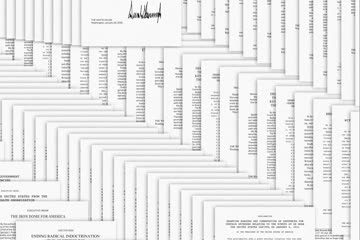
Trump Issues Executive Order Requiring Revisions at Smithsonian to Eliminate Perceived Ideological Indoctrination and Controversial Narratives

Title: Trump’s Executive Order Ignites Debate on the Smithsonian Institution’s Future
In a bold action with significant consequences for American cultural entities, former President Donald Trump enacted an executive order on March 27, 2025, poised to alter the way the Smithsonian Institution conveys and interprets American history. Named “Restoring Truth and Sanity to American History,” the order embodies a larger ideological initiative aimed at reforming the narrative of the country’s past in federally supported venues—most prominently, the Smithsonian itself.
Established in 1847, the Smithsonian Institution is the largest museum, education, and research network globally, comprising 21 museums and galleries, the National Zoo, and various research facilities. With a collection exceeding 157 million items, the Smithsonian is a crucial center for public education, research, and the preservation of the nation’s cultural heritage.
Nevertheless, the new executive order puts the implementation of that mission into question.
A Change in Historical Portrayal
The executive order states that there has been “a concerted and widespread effort to rewrite our Nation’s history,” which the administration argues is substituting “objective facts with a distorted narrative motivated by ideology rather than truth.” Consequently, the order targets Smithsonian exhibitions that, according to the administration, depict American and Western values negatively or endorse what it terms “divisive narratives.”
One particular exhibition mentioned in the executive order critiques monumental sculpture and themes of race at the Smithsonian American Art Museum. Another contentious issue involves the planned feature of trans athletes in forthcoming displays at the upcoming Smithsonian American Women’s History Museum, which the order derogatorily describes as “male athletes participating in women’s sports.”
The order proclaims that exhibitions and educational initiatives perceived to “degrade shared American values” will lose federal funding. These measures unfold alongside broader cultural debates regarding the representation of race, gender, identity, and historical injustices within public institutions.
Vice President JD Vance’s Oversight Authority
To enact the executive order, Vice President JD Vance has been appointed to oversee attempts to purge what the administration deems “improper ideology” from Smithsonian exhibitions and initiatives. Vance, who is also a member of the Smithsonian Board of Regents, will work with the Office of Management and Budget and Congress to distribute—or withhold—funding based on adherence to the updated criteria.
The mandate necessitates a review of all current and future exhibitions to confirm compliance with “Federal law and policy,” and Vance has the authority to flag those that conflict with the administration’s agenda.
Safeguarding Historical Monuments and Heritage
The executive order also addresses national historical sites and public monuments. With the 250th anniversary of the Declaration of Independence in 2026 approaching, President Trump has expressed his intention to revitalize Independence National Historical Park in Philadelphia. The order additionally calls for a government review of public statues, particularly Confederate monuments removed during the Black Lives Matter protests, to assess their reinstatement.
All federal monuments managed by the Department of the Interior will be evaluated to ensure they emphasize “the greatness of the achievements and progress of the American people,” avoiding portrayals that depict historical figures negatively.
Smithsonian Secretary’s Reaction
Confronted with this unprecedented situation, Lonnie G. Bunch III, Secretary of the Smithsonian Institution, communicated a message to staff reaffirming the institution’s autonomy and dedication to academic integrity. Bunch, a historian and the first African American leader of the organization, previously held the position as the founding director of the National Museum of African American History and Culture.
In an internal email, Bunch urged staff to “remain steadfast” and confirmed that Smithsonian exhibitions and programs will “continue to present world-class exhibits, collections, and artifacts, grounded in expertise and accuracy.” He stressed that all endeavors will continue to be motivated by “the best scholarship, free of partisanship,” to assist Americans in “better understanding our nation’s history, challenges, and victories.”
A Wider Cultural Flashpoint
The executive order has generated intense discussion among historians, scholars, and the general public. While proponents advocate for a renewed focus on patriotism and unity, critics caution that the directive jeopardizes academic freedom and aims to sanitize history to conform to an ideological framework.
Concerns are mounting that restricting the representation of marginalized groups—such as Indigenous peoples, African Americans, women, and the LGBTQ+ community—could lead to the omission of crucial chapters of the American narrative. Many are apprehensive that federal threats to funding could create a chilling impact on scholarly research, curatorial autonomy, and historical education nationwide.
What Awaits
As cultural institutions, including the Smithsonian, navigate this changing environment, the nation finds itself at a critical juncture in the ongoing struggle over historical memory. The Smithsonian’s response to the obstacles posed by this executive order will likely influence public perception of American history and the function of museums in society for many years to come.
One thing is undeniable: The task of portraying a multifaceted and